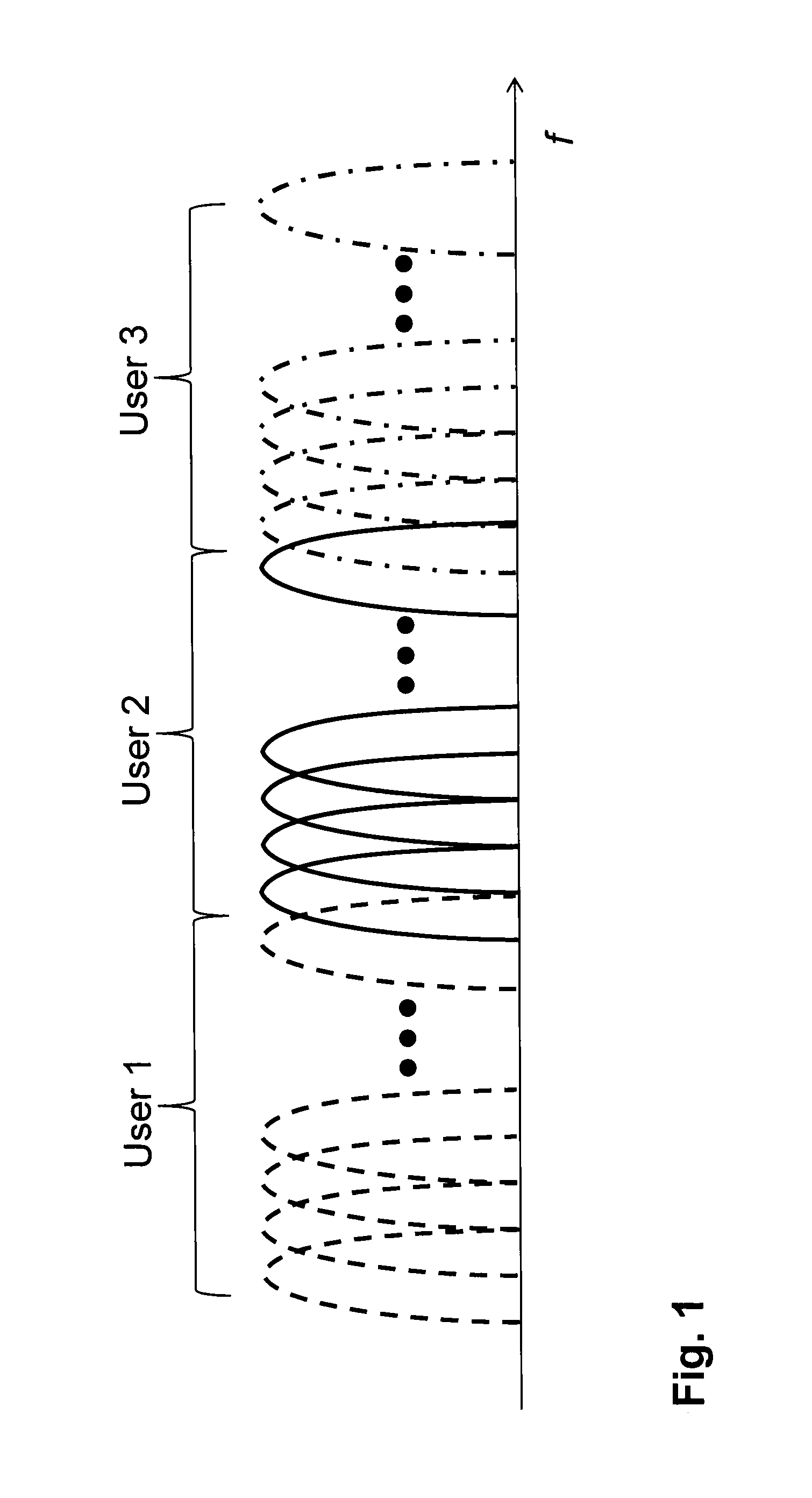LTE baseband receiver and method for operating same
a baseband receiver and receiver technology, applied in the field of lte compliant baseband receivers, can solve the problems of receiver performance worse in noise limited scenarios, interference from other cells becoming the most dominant source of interference, and interference likely to be highly frequency selective, so as to overcome performance loss
- Summary
- Abstract
- Description
- Claims
- Application Information
AI Technical Summary
Benefits of technology
Problems solved by technology
Method used
Image
Examples
first embodiment
[0050]FIG. 6 shows a block diagram of a receiver according to the invention which assesses the received signal powers of the primary and secondary synchronization channels which are provided by cell searcher 41. If the searcher detects one or more adjacent cells on the same channel, the received signal strengths are compared to the signal power of the signal from the base station currently servicing the user's terminal, as shown at 61. In one embodiment, a ratio is calculated of the accumulated signal strengths of all adjacent cells detected by the cell searcher to the signal from the servicing base station. In another embodiment, a ratio is calculated of the signal strength of each adjacent cell detected by the cell searcher to the signal from the servicing base station. If the ratio(s) between the received signal strengths of the adjacent cells and the received signal strength of the signal from the servicing base station is above a certain threshold, selector 62 supplies the freq...
second embodiment
[0051] which is illustrated in FIG. 7, the frequency selective interference is estimated by frequency selective interference estimator 56, and the receiver additionally comprises a variance detector 71 which calculates the variance of the estimates obtained in estimator 56. The resulting variance is used as a decision criterion about frequency selectivity of the interference. If the variance of frequency selective interference estimates is above a predefined threshold, it is decided to use the frequency selective interference level estimates for soft-metric calculation at 63, otherwise, the source of interference is assumed to be frequency independent and the noise level estimate from estimator 46 is forwarded to soft metric calculation block 63, by selector 72.
[0052]Thus, the receivers of FIGS. 6 and 7 comprise estimators for both frequency selective interference and for providing an average interference level estimate as required e.g. for thermal noise limited reception scenario. ...
third embodiment
[0054]In the invention, frequency selective interference level estimator 56 is followed by a moving average block 82, as shown in FIG. 8, which computes moving averages across the frequency band. This moving averaging is continuously adjustable between the extremes of no averaging, corresponding to the output of frequency selective interference level estimator 56, and averaging across the entire frequency band, corresponds to the function of noise level estimator 46 as described with reference to FIGS. 6 and 7, i.e., between ‘fully frequency selective’ and ‘not frequency selective’. Moving averaging is controlled by averaging adaptation block 81, which sets the length of the moving averaging 82 the output of which is forwarded to soft-metric calculation 63.
[0055]In a modification of this embodiment, averaging adaptation switches between ‘little averaging’ and ‘much averaging’, rather than ‘no averaging’ and ‘full averaging’, corresponding to a small and a larger moving average param...
PUM
 Login to View More
Login to View More Abstract
Description
Claims
Application Information
 Login to View More
Login to View More - R&D
- Intellectual Property
- Life Sciences
- Materials
- Tech Scout
- Unparalleled Data Quality
- Higher Quality Content
- 60% Fewer Hallucinations
Browse by: Latest US Patents, China's latest patents, Technical Efficacy Thesaurus, Application Domain, Technology Topic, Popular Technical Reports.
© 2025 PatSnap. All rights reserved.Legal|Privacy policy|Modern Slavery Act Transparency Statement|Sitemap|About US| Contact US: help@patsnap.com



